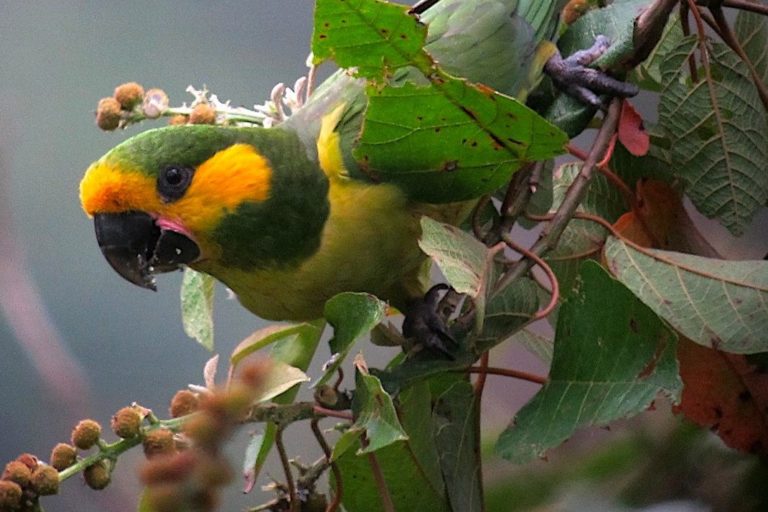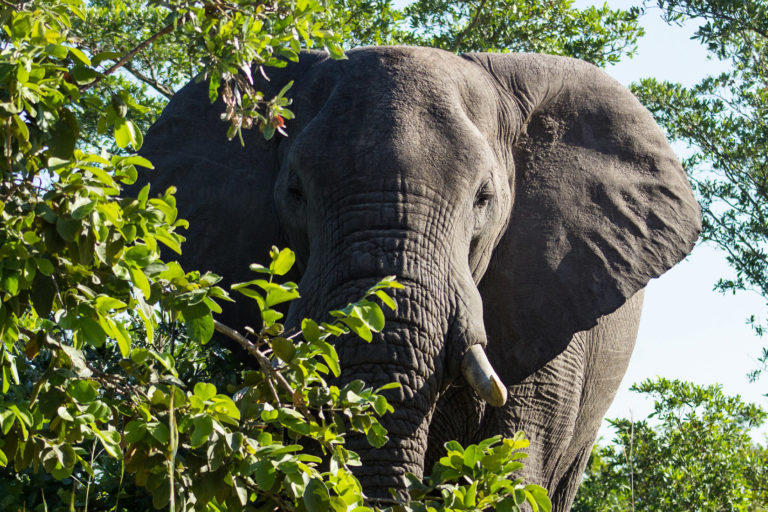- Biodiversity credits have the potential to accelerate funding for biodiversity conservation while benefiting local communities and biodiversity custodians.
- To make voluntary biodiversity credits work for nature and its custodians, we need to step out of the carbon credit framing for technical, social and practical reasons.
- This post is a commentary. The views expressed are those of the authors, not necessarily of Mongabay.
Biodiversity conservation requires a fundamentally different approach to managing climate change, and their respective crediting systems need to accommodate that difference for technical, social and practical reasons. Carbon credits are created so that emitters can compensate on an annual basis. Biodiversity credits (biocredits) are created to stop and reverse species loss by addressing a multitude of threats, including permanent habitat loss, in hand with local biodiversity custodians. The nature of the problem they address is different. To make biocredits work for nature and its custodians, and to successfully accelerate funding for biodiversity conservation, a new framework is needed.
Operationally speaking, a biodiversity credit system should deliver measurable ecological outcomes and long-term certainty to investors and biodiversity custodians. These ecological outcomes, represented in biocredits, can be transferred and sold to individuals and companies seeking to make claims on those outcomes. As the debate over the integrity, functionality and governance of a voluntary biodiversity crediting system heats up, there are insights specific to biodiversity conservation that should be considered and which are pertinent to the development of this new financing mechanism.
Firstly, the diversity of biodiversity between ecosystems globally means there are no two places alike. This results in varied recovery dynamics between ecosystems. Some regenerate quite rapidly, for example tropical humid forests, while others can take decades like the boreal forests. Recovery patterns will depend on disturbances and factors such as climate change. This mandates us to think about biocredits in a way that is coherent with natural dynamics and does not create a bias towards faster recovering systems. Hence it is important that a biocredit system recognizes differences and can “normalize” among different management interventions and sites based on a set of criteria that represent global ecological significance. For example, the use of IUCN’s Red List of Ecosystems as a global standard for assessing risks or the Australian government’s use of the habitat hectares approach.

Measuring ecological outcomes related to biodiversity conservation or recovery requires analyzing different types of indicators that speak to ecosystem structure, composition, and function, that ultimately inform ecosystem integrity. Biocredits will need multivariate approaches and metrics in their monitoring and reporting schemes, which will be influenced by the ecosystem and project size. Rather than biocredit standards being too prescriptive, it will be better to have methodologies whereby metrics are validated as appropriate for the specific system. Clearly creating a methodology that can withstand critique and adapt over time will not be easy. Finding the right balance between accuracy and simplicity is a critical need for a healthy biodiversity market.
Credits need to represent meaningful time horizons for biodiversity conservation outcomes. Biodiversity changes and impacts happen over time, where annual variations (both positive and negative) can occur due to external factors such as changing climatic conditions or shifting baselines. Annual ecological gains, like in the case of carbon, where credits represent annual emissions reductions, is largely unrealistic, costly and risky. To do this efficiently and effectively, biocredits need to include a permanence and durability component in their methodology. For example, ten square meters or 1 hectare of endangered, conserved, or restored habitat for 30 years or in perpetuity. That is what nature needs. Other nature crediting programs in the compliance markets have already identified the importance of this. In the case of the United States a wetland credit and in Australia one biodiversity credit represent management in perpetuity.
Secondly, biocredits can only be generated with nature and the people taking care of those natural ecosystems, unlike carbon credits which can be generated from a multitude of sources. In many biodiversity hotspots globally biodiversity conservation and restoration processes are inherently linked to the will of biodiversity custodians and their land tenure. Thus, biocredits will be intimately linked to the people, the communities and their land tenure and titles. This means that time horizons for delivering measurable ecological results can only be framed through a socio-ecological lens that considers local social and ecological processes. Biodiversity outcomes are also measured through the legal and social strength of the societies around them that ensure the sustainability and permanence of conservation actions.
The ability for biocredits to contribute to the 30×30 Global Biodiversity Framework goals and long-term biodiversity outcomes is also related to the financial needs of the potential stakeholders involved, which need to be underwritten by long-term financial security (e.g. functional credit market, endowments, insurance schemes), & legal guarantees (land titles and contracts, formal protection status), which will enable long term stewardship and the durability and permanence of biodiversity projects. Hence combining process milestones related to mitigating and reducing threats and disturbances with ecological milestones, and adequate performance-based payment schedules that give projects appropriate cash flows, are appropriate for demonstrating biodiversity conservation results and unlocking incentives. For example, if a community is living in a highly strategic area for biodiversity conservation, but it has no formal land title, a key milestone of a conservation project in this area could be securing long term use rights of that land by communities tied to long term natural resources management. Transparency of both land tenure arrangements and funding flows will give the sort of assurance to investors that has kept them from fully embracing the voluntary carbon market.

Given biocredits will have people and communities at their heart, many of which have historically taken care of those natural ecosystems, biocredit projects, their evaluation, monitoring and reporting, must be meaningful and understandable to nature stewards. Biodiversity credit systems have the possibility of embracing participatory monitoring processes that start out with conversations in local communities about which biodiversity is relevant in that specific context. The social process will be key to ensuring permanence. Without sacrificing rigor there are practical and cost-effective means to estimate ecosystem integrity and biodiversity that are relatable to local communities. If there is something powerful in biocredits is that we all know what species diversity can look like, unlike a ton of carbon.
Lastly, for a credit system to have the desired impact, credit prices will need to cover the true cost of management. People need to be paid well to do good work and to protect and restore the environment. The economic driver and rationale need to exist. The challenge is to create the protocols and standards that promote alignment of interests so that everyone is appropriately compensated as conservation outcomes are delivered. This applies to landowners and stewards, project developers and managers, investors, registries, buyers and sellers.
Achieving the Global Biodiversity Framework targets (Protecting 30% of the earth by 2030) requires that both preservation and restoration of natural ecosystems are eligible crediting activities. Preservation is more valuable from an ecological perspective but is inherently cheaper than restoration activities, as such the sale of credits from restoration outcomes may be at risk, as funding will likely flow to the cheaper preservation projects. The ecological value of distinct conservation credits might drive their market value up, equalizing costs slightly. Differentiating activities will allow for 30×30 restoration targets to be aligned and this value realized by buyers.
Unless we deploy the best designed tools to enable the corporate sector to contribute efficiently to the work of governments and individuals we will be faced with dire consequences to our biodiversity, soils, climate, fresh water and the ocean. Biodiversity markets will need to have some of the same mechanisms of existing ecological markets, but they will also require bespoke and unique arrangements. Biodiversity conservation focuses on preserving the billions of species that co-inhabit the planet with us. The climate challenge is fundamentally a geo-chemistry equation. Both must succeed.
Mariana Sarmiento is the Chief Executive Officer of Terrasos & a biodiversity custodian, Colombia and Simon Morgan is the Chief Biodiversity Officer of ValueNature, & a biodiversity custodian, South Africa.
Acknowledgements: Special thanks to Greg Landua from Regen Network and Charles Bedford from Carbon Growth Partners for their contributions and feedback.
References:
- Polazzo, F., & Rico, A. (2021). Effects of multiple stressors on the dimensionality of ecological stability. Ecology letters, 24(8), 1594-1606.
- Truchy, A., Sarremejane, R., Muotka, T., Mykrä, H., Angeler, D. G., Lehosmaa, K., … & McKie, B. G. (2020). Habitat patchiness, ecological connectivity and the uneven recovery of boreal stream ecosystems from an experimental drought. Global Change Biology, 26(6), 3455-3472.
- Barboza, F. R., Ito, M., & Franz, M. (2018). Biodiversity and the Functioning of Ecosystems in the Age of Global Change: Integrating Knowledge Across Scales. YOUMARES 8–Oceans Across Boundaries: Learning from each other, 167.
- McCarthy, M. et al. (2004). The habitat hectares approach to vegetation assessment: An evaluation and suggestions for improvement. Ecological Management and Restoration. 5. 24-27.
- Salzman, J., Bennett, G., Carroll, N., Goldstein, A., & Jenkins, M. (2018). The global status and trends of Payments for Ecosystem Services. Nature Sustainability, 1(3), 136-144.
Header image photo credit: Island in Indonesia. Rhett A. Butler
See related:
Biodiversity credit market must learn from carbon offset mistakes (commentary)
